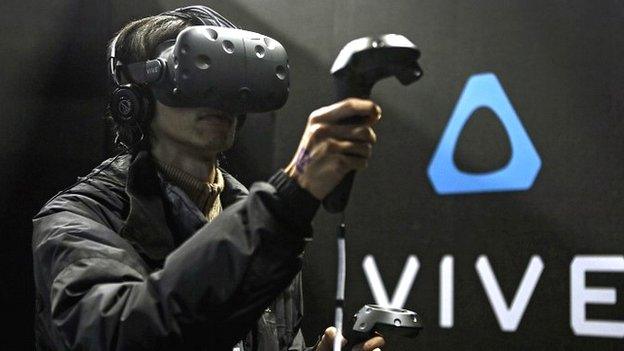PlayStation VR is cheaper than Oculus Rift and HTC Vive
- Published
Sony's PlayStation VR has undercut its rivals. Its headset will cost £349 in the UK and $399 in the US.
Sony has revealed that its virtual reality headset will cost $399 (£282) in the US.
That makes it $200 cheaper than Facebook's rival Oculus Rift and $400 less than HTC's Vive.
The PlayStation VR is seen as less advanced than its two rivals, but many experts think it will outsell them.
However, the disclosure that it will not be released until October means Sony will fail to meet its earlier target of the first half of 2016.
The Japanese company also revealed that it expects more than 50 games tailored to its headset will be available at its launch.
It made its announcement, external in San Francisco to coincide with the city's Games Developers Conference.
Retailers have confirmed that the UK price - which includes the VAT sales tax - will be £350.
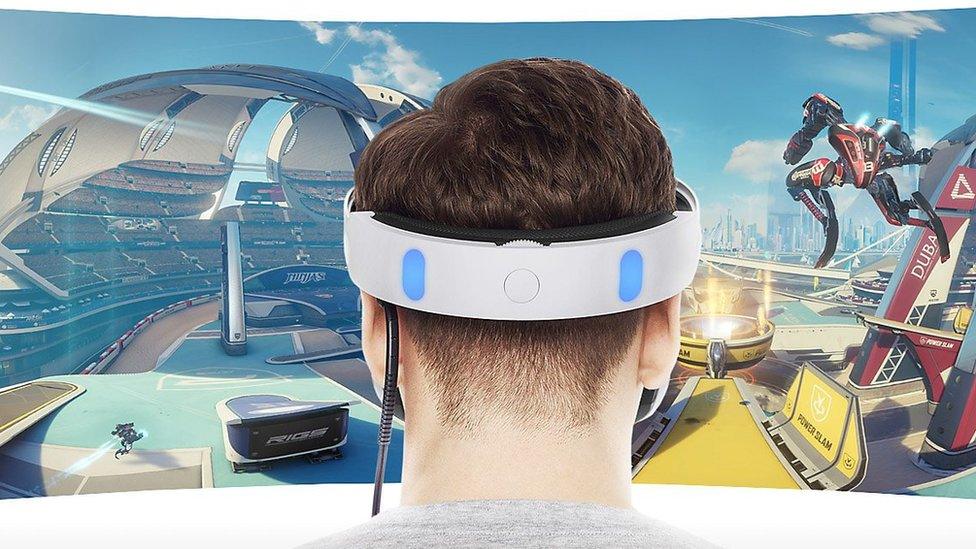
Sony is likely to announced more details about its VR games at the E3 games show in June
'Open goal'
Virtual reality involves a user's vision being filled with computer-generated images or 360-degree views of stitched-together videos, which move as they tilt and angle their head.
When done well, this results in the wearer feeling as if they are present within the environments they are looking at, delivering a more engaging experience than a TV or monitor.
The research firm IHS has forecast that about 53 million people will own a PlayStation 4 console - which is required to use the new PlayStation VR - by the end of this year.
It predicts 1.6 million people will buy Sony's headset before 2017 and that the biggest limit on sales will be the speed at which it can manufacture the device.
"When Oculus and HTC announced their relative headset pricing, Sony was offered an open goal opportunity to take an early lead in the consumer VR market, which it has taken with aplomb," said IHS analyst Piers Harding-Rolls.
"Sony's walled garden approach to the PS4 platform means it is well placed to provide a better controlled and consistent VR experience to consumers. This will be important in driving adoption and positive word of mouth."
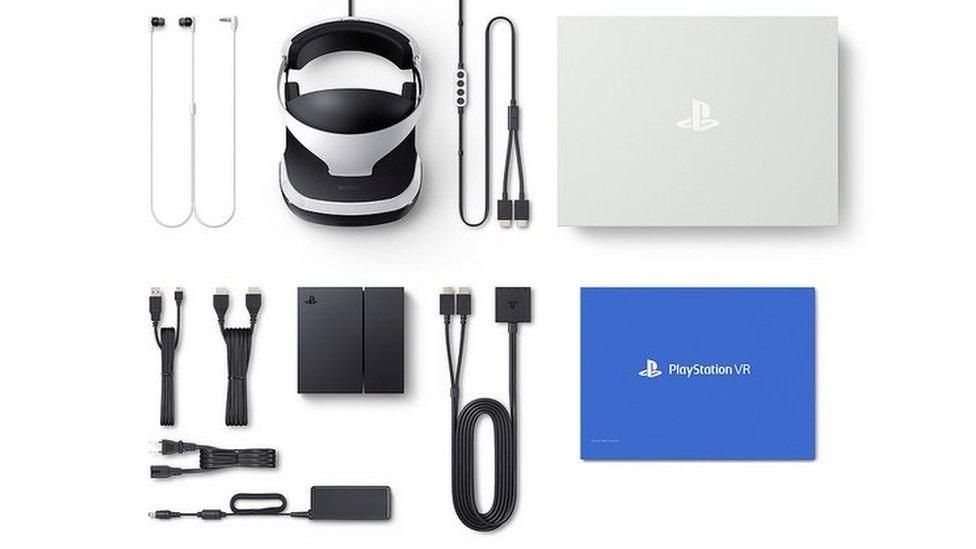
Sony published an image of what the $399 fee covers, confirming that its Move controllers and camera are not included in the price
By contrast, HTC and Oculus rely on gamers owning a relatively high-end Windows PC, which adds to their costs.
One consequence is that both the Vive and the Rift should be able to run games with more advanced graphics. They both also offer higher resolution displays and wider fields of view, which could make their games seem more immersive.
But the PlayStation VR provides a faster refresh rate - allowing it to display 120 frames per second, rather than the 90fps limit of its rivals - which should make its games seem smoother and less likely to cause motion sickness.
It is not known what Sony's profit margin will be on the device. But there has been speculation that it is willing to make a loss at launch in order to capture a bigger slice of the market.
"Next-generation consoles have historically been sold close to - if not below - cost and PlayStation VR is likely to be no different," commented Geoff Blaber from the consultancy CCS Insight.
"Sony has a big opportunity to build an early leadership position and extend its PS network to a new platform."
'Uncharted territory'
Reviewers suggest that the best VR games are designed with the format in mind, rather than just ports of existing titles.
Games designers are also still experimenting with how best to use virtual reality.
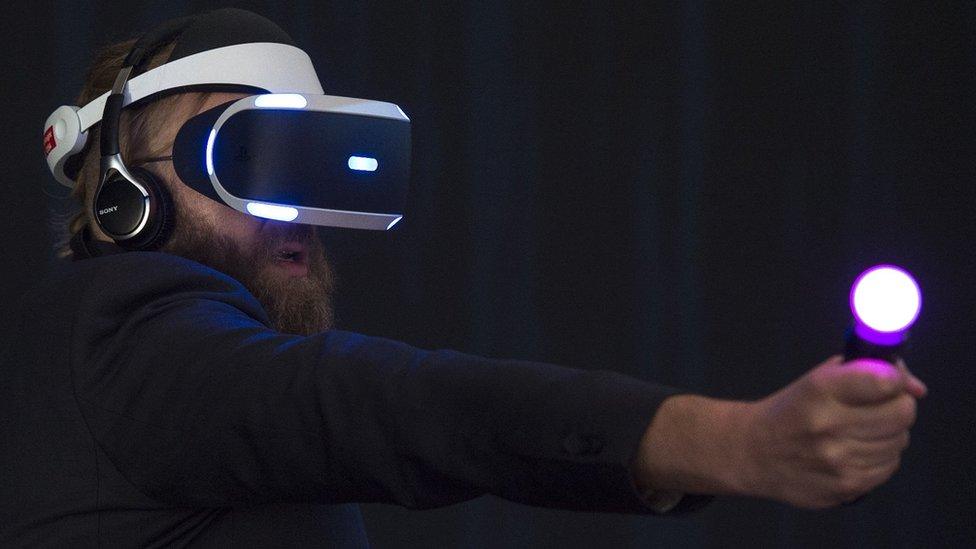
Sony's headset can be paired with its Motion batons or the firm's DualShock 4 gamepad
Bearing in mind most players will not invest in VR hardware for some time to come, if at all, that makes it a relatively high-risk venture.
"Games-makers need as big an install base as possible to get a viable return on their investment when they are developing for VR," commented Rob Crossley, UK editor at the news site Gamespot.
"Sony, HTC and Oculus will all want each others' devices to sell well to inspire those developers.
"They all need each other to succeed because this is uncharted territory - a concept that has yet to be proven on the market."

VR headsets compared:
PlayStation VR
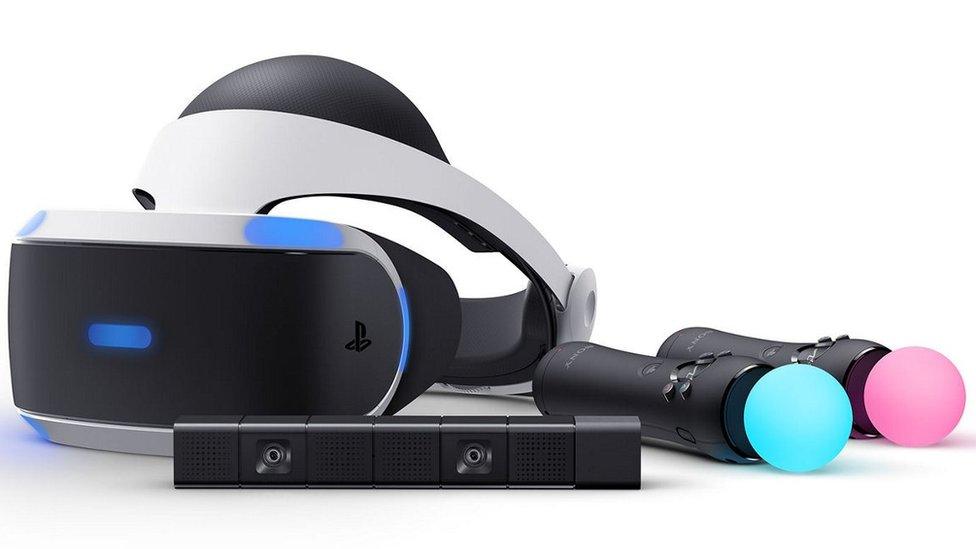
Price: $399 (£282) excluding tax/£350 including VAT
Release date: October 2016
Computer required: PlayStation 4
Built-in sensors: Accelerometer, gyroscope
Controls: DualShock 4 gamepad, PlayStation Move hand batons, PlayStation 4 motion-sensing camera - none of which are included in the price
Resolution: 1,920 by 1,080 pixels
Field of view: 100 degrees
Refresh rate: 120Hz

HTC Vive:
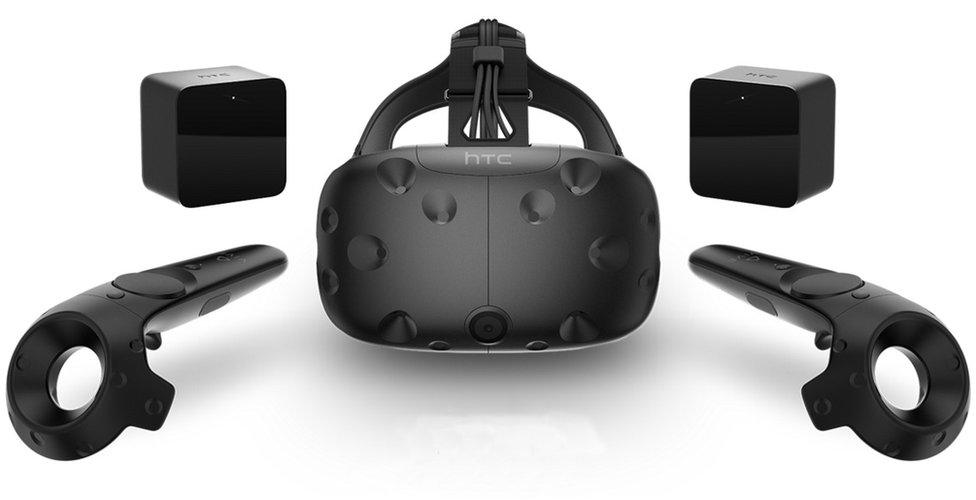
Price: $799 excl tax/£689 incl VAT (includes three games and two hand controllers)
Release date: April 2016
Computer required: PC running Windows 7 or higher with Nvidia/AMD video card
Built-in sensors: Accelerometer, gyroscope, front-facing camera, laser sensor
Controls: Two motion-tracking hand controllers and two infrared laser-emitting base stations used to determine where the player is standing
Resolution: 2,160 x 1,200 pixels
Field of view: 110 degrees
Refresh rate: 90Hz

Oculus Rift:
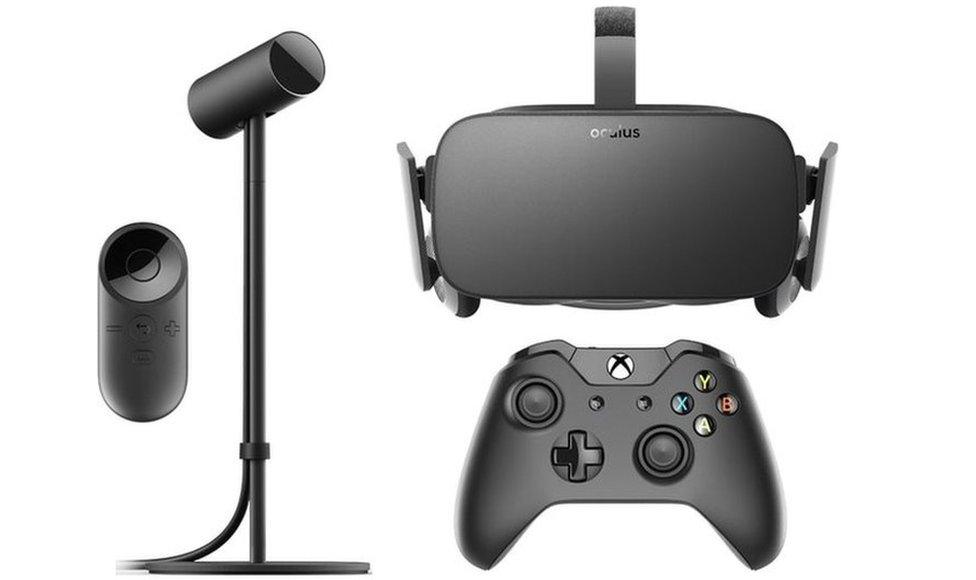
Price: $599 (£423) excl tax
Release date: March 2016
Computer required: PC running Windows 10 fitted with Nvidia/AMD video card
Built-in sensors: Accelerometer, gyroscope, magnetometer
Controls: Xbox gamepad, remote control, infra-red sensor peripheral to track movements. Dedicated Touch hand controllers are also set to be released before the end of the year.
Resolution: 2,160 by 1,200 pixels
Field of view: 110 degrees
Refresh rate: 90Hz

AMD Sulon HMD:
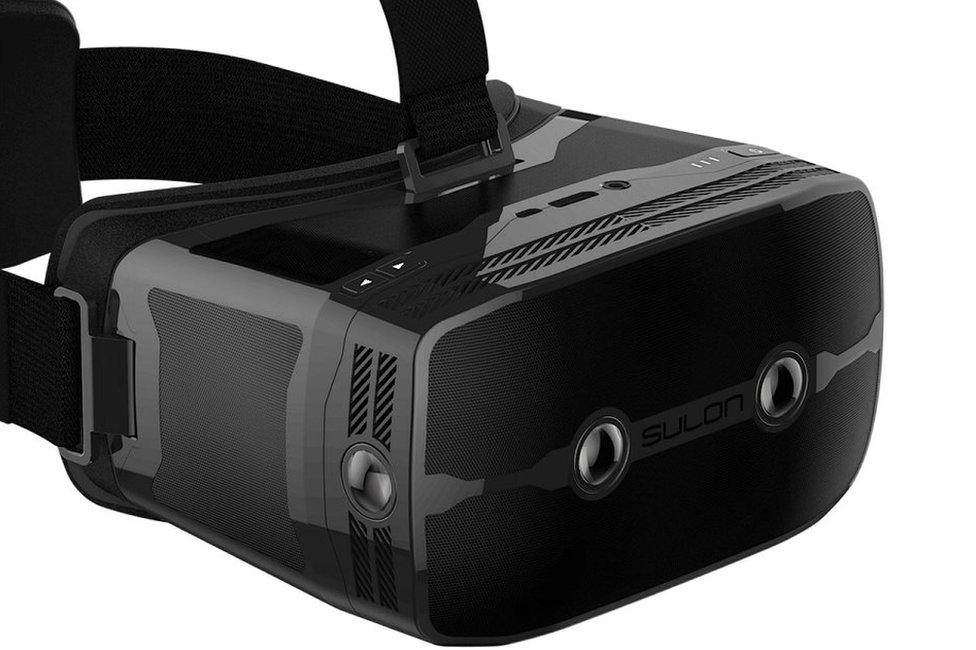
Price: To be confirmed
Release date: Spring 2016
Computer required: Nothing - computer processor is built-in
Built-in sensors: Accelerometer, gyroscope, magnetometer, "spatial mapping and tracking" sensors that make augmented reality applications possible as well as VR
Controls: Keyboard and mouse included, but works with any Windows 10-compatible controls
Resolution: 2,560 by 1440 pixels
Field of view: 110 degrees
Refresh rate: 90Hz

Google Cardboard:
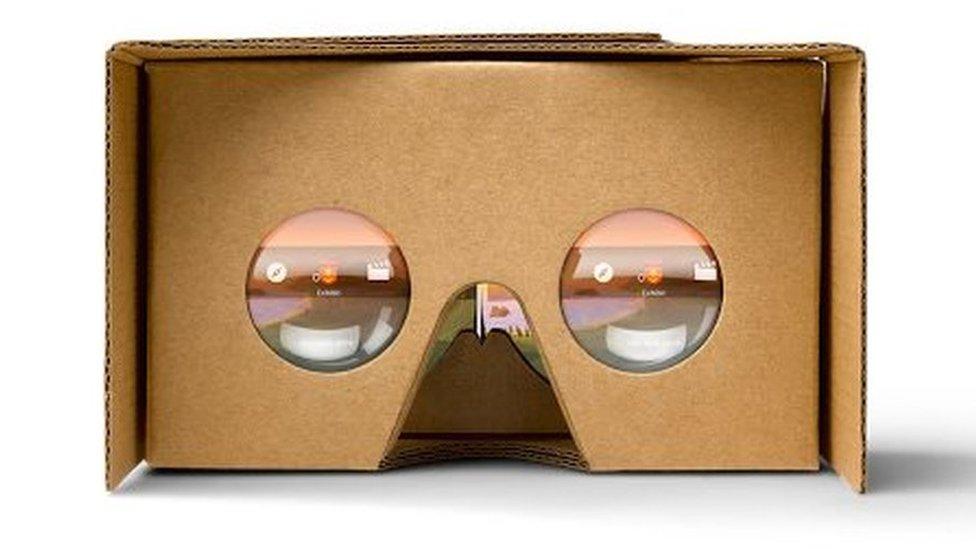
Price: $15 (£10.50) - but often given away free
Release date: June 2014
Computer required: Android or iOS smartphone
Built-in sensors: None - relies on those built into the handsets
Controls: Optional third-party gamepads
Resolution: Dependent on phone used
Field of view: 100 degrees (version two design)
Refresh rate: Dependent on phone used
- Published16 March 2016
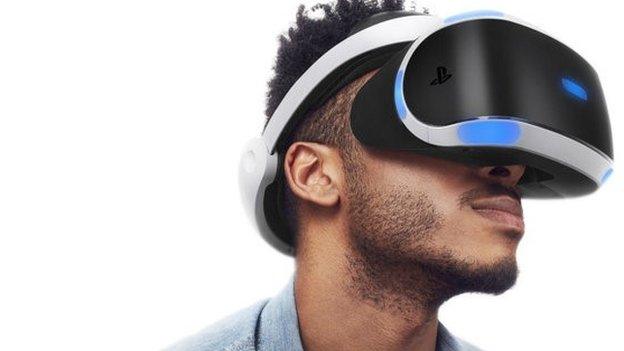
- Published15 March 2016

- Published7 January 2016
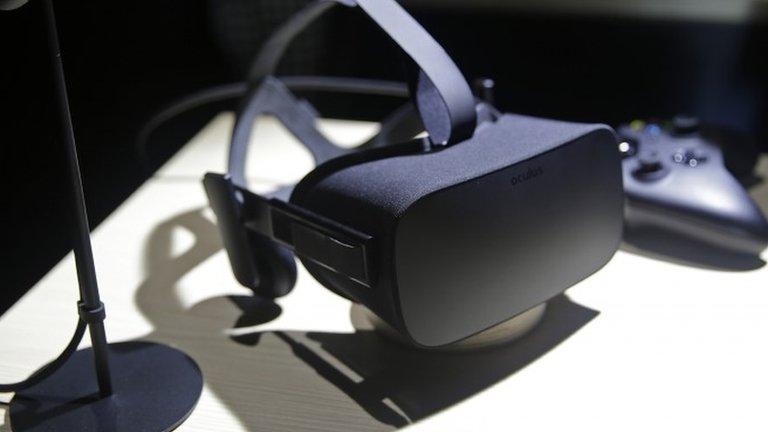
- Published21 February 2016
